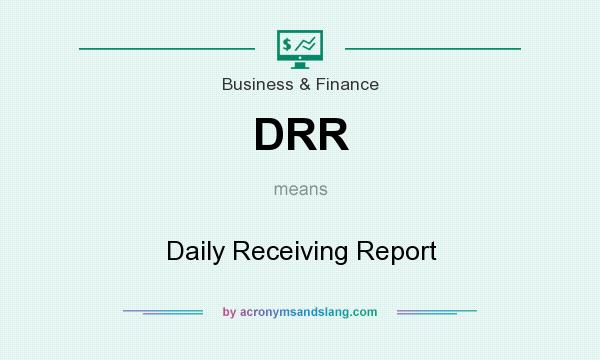
It is used primarily to value financial assets and liabilities, which fluctuate in value. The accounting thus reflects both their gains and their losses in value. Companies in the financial services industry may need to make adjustments to their asset accounts in the event that some borrowers default on their loans during the year. When these loans have been identified as bad debt, the lending company will need to mark down its assets to fair value through the use of a contra asset account such as the “allowance for bad debts.”
- The insurance companies hold the more profitable long asset and there is no unnecessary and costly contagion when they go bankrupt.
- An adviser can help you determine the correct allocation based on your personal financial goals.
- The low prices are determined by the endogenous amount of liquidity in the market rather than the future earning power of the asset.
- Wholesalers use mark to market accounting when they need to adjust the value of their accounts receivable asset.
- In recent years there has been a considerable debate on the advantages and disadvantages of moving towards a full mark-to-market accounting system for financial institutions such as banks and insurance companies.
Wholesalers use mark to market accounting when they need to adjust the value of their accounts receivable asset. Many wholesalers will offer discounts to purchasers if they pay sooner. Depending on the percentage of customers likely to accept a discount for shorter payment terms, a wholesaler will need to mark down its accounts receivable to the market value using a contra asset account.
Optimal financial crises
An example is presented in Section 6 to show that the conditions derived in the previous sections can be satisfied and the effects analyzed are possible. Section 7 contains a discussion of the implications of our analysis for accounting standards. Mark to market is also used in the field of futures trading where on a daily basis contract are marked to market.
Fortis Inc. Releases Second Quarter 2023 Results and Sustainability Update Report – Yahoo Finance
Fortis Inc. Releases Second Quarter 2023 Results and Sustainability Update Report.
Posted: Wed, 02 Aug 2023 07:00:00 GMT [source]
When insurance companies hold the long asset they must liquidate it when they go bankrupt. The low prices are determined by the endogenous amount of liquidity in the market rather than the future earning power of the asset. If accounting values are based on historic cost, the low market prices do not lead to contagion. They remain solvent and can continue operating until their assets mature.
Mark to Market in Personal Accounting
This method of accounting is also used for some securities, such as mutual funds, swaps, or securities, in order to indicate their current market value. Mark to Market accounting is considered necessary in order to provide investors and other market participants with an objective and accurate representation of a company’s assets and liabilities. Let’s suppose that the trader needed to issue a financial report on Day 4, and that the futures contract was previously listed on their financial statements at $60.
To better understand the role of different accounting methods during crises, we present a model with a banking sector and an insurance sector based on Allen and Gale (2005a) and Allen and Carletti (2006). Banks obtain funds from depositors who can be early or late consumers in the usual way. The distinguishing feature of banks is that they have expertise in making risky loans to firms. They use the returns of the short asset to satisfy the claims of depositors withdrawing early and the returns from the loans and long asset to pay the late consumers.
What is Mark to Market?
Gradually the practice of measuring on a mark to the market basis was given to the dealers trading in the securities market so that they could deposit the shortage of the security deposit amount. This becomes the rule that only short term securities and security dealers, brokers, and derivative dealers can follow the mark to market accounting concept. Some items measuring fair value are part of Generally Accepted Accounting Principles in the United States.
- When liquidity plays an important role as in financial crises, asset prices may reflect the amount of liquidity available rather than the asset’s future earning power.
- Mutual funds are also marked to market on a daily basis at the market close so that investors have a better idea of the fund’s net asset value (NAV).
- Thus the mark to the market value of his investment now stands at $4000 even though the book value is $5000.
- Gradually the practice of measuring on a mark to the market basis was given to the dealers trading in the securities market so that they could deposit the shortage of the security deposit amount.
- Note that the Account Balance is marked daily using the Gain/Loss column.
This in turn should allow investors and policy makers to better assess their risk profile and undertake more timely market discipline and corrective actions. In contrast, opponents claim that mark-to-market accounting leads to excessive and artificial volatility. As a consequence, the value of the balance sheets of financial institutions would be driven by short-term fluctuations of the market that do not reflect the value of the fundamentals and the value at maturity of assets and liabilities. In investment market which entails securities trading, mark to market reflects the current market value securities, portfolios or accounts.
FAS 115
In that scenario, the asset would be reported (on day 4) at $58, and it would also result in an unrealized loss of $2. One area where MTM is especially important is in the financial sector, such as in derivatives trading. In derivatives contracts, the counterparties need to know what the contract is worth at any given time, because this will determine what they owe one-another. To make sure this information is available, the counterparties will typically use MTM on a regular basis, repricing their contract based on the latest available market information. In accounting for individuals, the market value is considered to be equal to the replacement cost for a given asset.

These do have a number of safeguards to ensure that the prices used are appropriate for valuation purposes. The criterion for using prices is that there is an active market with continuously available prices. We suggest that it is also necessary that the market be liquid in the sense that it can absorb abnormal volume without significant changes in prices. The core idea of MTM is to ask yourself what the asset or liability would be worth if the company were to sell or dispose of it today. Companies need to determine this when they are preparing their financial statements.
Section 3 considers the autarkic equilibrium where the sectors operate in isolation. Conditions are identified for systemic risk to arise in the insurance sector. Section 4 analyzes the functioning of credit risk transfer and the circumstances in which it can induce insurance companies to hold the long asset. Section 5 considers the interaction of liquidity pricing and accounting rules. In particular, it is shown that mark-to-market accounting can result in contagion even though with historic cost accounting there would be none.
The most infamous use of mark-to-market in this way was the Enron scandal. The drawback with mark to market is that during volatile or unstable market conditions it may not rightly give the correct valuation of the assets. The difference between mark to market and historical accounting cost is that mark to market is more of a forward-looking approach whereas historical accounting maintains the cost of the asset at its base price or original price. The brokers or persons dealing in the future must pay some security deposit to the exchange.
Insiders are in the best position to determine the creditworthiness of such securities going forward. In theory, this price pressure should balance market prices to accurately represent the “fair Mark to market accounting value” of a particular asset. Purchasers of distressed assets should buy undervalued securities, thus increasing prices, allowing other Companies to consequently mark up their similar holdings.
Form 8-K/A Genprex, Inc. For: Jul 10 – StreetInsider.com
Form 8-K/A Genprex, Inc. For: Jul 10.
Posted: Mon, 21 Aug 2023 21:14:45 GMT [source]
Over-the-counter (OTC) derivatives, in contrast, are formula-based financial contracts between buyers and sellers, and are not traded on exchanges, so their market prices are not established by any active, regulated market trading. During their early development, OTC derivatives such as interest rate swaps were not marked to market frequently. Deals were monitored on a quarterly or annual basis, when gains or losses would be acknowledged or payments exchanged.

It can be useful for helping investors to meet margin requirements and for determining the amount of money they have made or lost in a day’s trading. One of the more common examples of mark to market accounting is available for sale securities. This is useful since the replacement cost of items is often different than the original cost, also known as the historical cost of an item. When the fiscal year ends, the balance sheet for the company needs to show the current value for some accounts.
